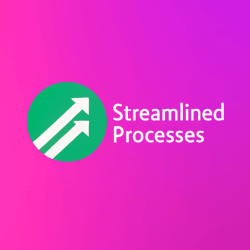For Subscription Management Systems, see our main page here.
What Are Subscription Management Systems?
Subscription Management Systems are platforms that streamline how businesses handle recurring billing, customer subscriptions, and payment processes. These systems automate the lifecycle of a subscription—from signup to renewal or cancellation—which ensures both customer satisfaction and revenue stability.
Used across industries like SaaS, eCommerce, publishing, and education, these systems help companies grow by simplifying operations. For example, a software startup can use a subscription platform to manage free trials, apply promotions, and collect monthly payments without manual intervention.
Most importantly, they reduce churn and increase lifetime customer value by providing flexible billing models and timely communication.
Why Businesses Rely on Subscription Management Systems
As digital business models grow, so does the demand for smarter recurring revenue tools. Companies rely on Subscription Management Systems because:
- Automation saves time: Recurring billing, invoicing, and email reminders run without manual input.
- Accuracy increases trust: Customers get timely and correct charges, reducing support tickets and disputes.
- Analytics help decision-making: Real-time metrics like churn rate and monthly recurring revenue guide strategy.
- Customization boosts retention: Tailored billing cycles and plan upgrades encourage customers to stay longer.
To clarify, without these systems, managing hundreds—or millions—of recurring payments would be both labor-intensive and error-prone.
Core Features of Today’s Leading Tools
Modern Subscription Management Systems go far beyond basic billing. They include robust suites of features to support growth, compliance, and customer experience:
- Plan Configuration: Offer free trials, tiered pricing, and bundled packages.
- Payment Gateway Integration: Work with Stripe, PayPal, or Authorize.Net for secure transactions.
- Automatic Invoicing: Generate tax-compliant invoices on a variety of schedules.
- Dunning Management: Recover failed payments through smart retries and customer alerts.
- Multi-Currency Support: Accommodate global customers with local pricing and tax rates.
- APIs and Webhooks: Allow integration with CRMs, ERPs, or analytics tools.
In short, a scalable subscription platform becomes the financial nerve center of the business, adapting easily to new offerings or markets.
Top Subscription Management Systems Compared
Choosing the right system depends on your team’s skillset, business scale, and customer needs. Below is a quick comparison of some recognized solutions:
- Chargebee: Best for SaaS companies needing fast deployment. Known for developer-friendly APIs and revenue recognition tools.
- Recurly: Focuses on reducing churn with advanced analytics and A/B testing for subscription plans.
- Paddle: Optimized for global SaaS businesses with tax automation and merchant-of-record support.
- Zuora: Tailored for enterprises managing complex billing across multiple systems and regions.
- SaaSOptics: Specializes in financial operations such as GAAP-compliant revenue reporting and investor-ready dashboards.
To sum up, small teams may prefer platforms like Chargebee or Recurly, while multinational firms often lean toward Zuora for comprehensive financial and operational control.
Common Mistakes to Avoid
Implementing a Subscription Management System can be game-changing. However, several common missteps reduce the return on investment:
- Underestimating integration complexity: Rushed setups often lack proper links to CRMs or accounting software.
- Ignoring tax compliance: Missing VAT or sales tax details can lead to severe fines, especially in cross-border scenarios.
- Failing to localize: Offering U.S.-only pricing alienates global users and limits reach.
- No dunning workflows: Without automated recovery for failed payments, revenue loss increases silently over time.
Most importantly, platform setup shouldn’t be rushed. Take time to match business workflows with system capabilities.
Industry Trends in Subscription Management Systems
The subscription economy is booming. According to Zuora’s Subscription Economy Index, recurring revenue businesses grew 4.6x faster than the S&P 500 over the past decade.
Current trends include:
- Usage-Based Billing: Pricing by consumption level encourages fair use and scales with customer growth.
- AI Revenue Forecasting: Predictive models help CFOs plan better, leveraging machine learning and historical data.
- Self-Serve Portals: Empower users to manage upgrades, payment info, and renewals independently.
- Freemium to Paid Funnels: Tools now track how users convert from trial to paying customers and use those insights for plan adjustments.
Consequently, Subscription Management Systems have evolved from mere tools into strategic assets that help companies stay competitive.
FAQ About Subscription Management Systems
What’s the difference between billing software and Subscription Management Systems?
Subscription Management Systems handle complete customer lifecycle management including trials, upgrades, downgrades, and renewals. Billing software often focuses just on invoicing and payments without lifecycle insight.
Can small businesses benefit from subscription platforms?
Absolutely. Smaller teams gain automation, compliance, and customer self-service without hiring extra staff. Even low-code solutions make it accessible for non-tech businesses.
Do all systems support usage-based pricing?
No. Some older platforms only support flat-rate or tiered pricing. Evaluate current needs and expected growth to choose the right fit.
How secure are these platforms?
Leading tools comply with PCI-DSS and GDPR standards. They use tokenization and encryption to safeguard customer payment data.
Are there open-source options?
Yes, tools like Kill Bill and Solidus provide open-source alternatives. However, they often require more developer involvement and ongoing maintenance.
Actionable Tips for Getting Started
If you’re exploring Subscription Management Systems, consider the following steps:
- Define your business model first: Choose pricing plans, customer types, and renewal rules.
- Create a deployment roadmap: Start with core features before expanding to add-ons like CRM workflows.
- Consult finance and compliance teams: Ensure the solution aligns with accounting and legal protocols.
- Prioritize support and documentation: Good onboarding tools reduce setup frustration.
Likewise, build in time for testing across payment gateways, customer types, and geographies.
This article was created with the assistance of AI tools and reviewed by our team at Streamlined Processes LLC to ensure accuracy and relevance.
Follow us on Facebook here.

